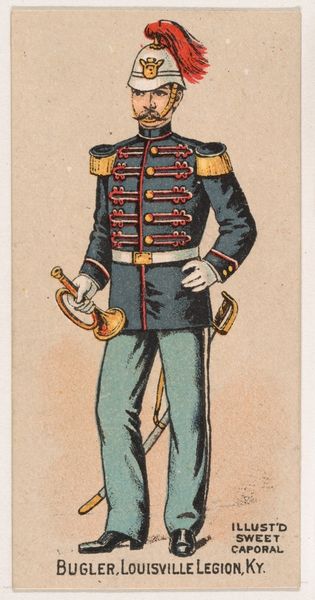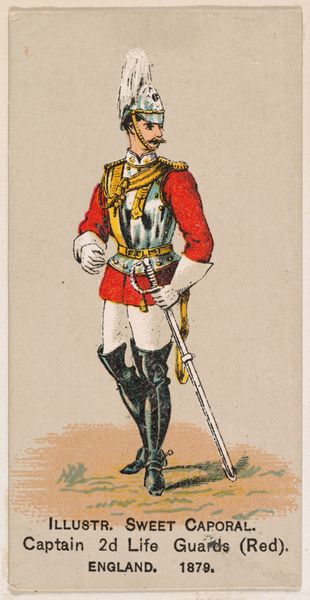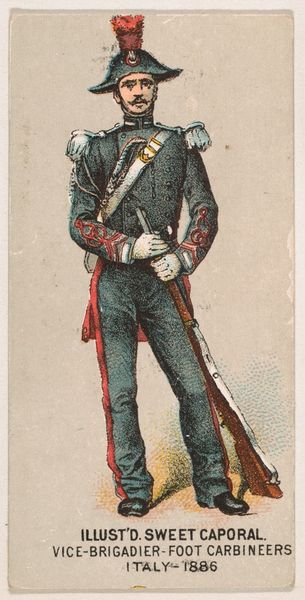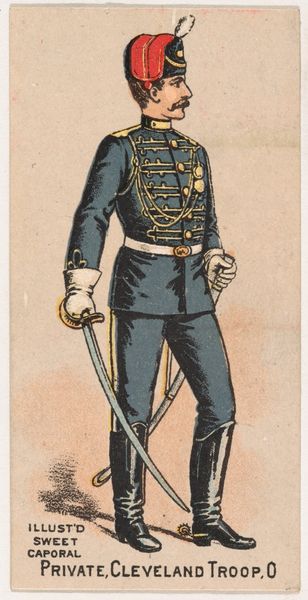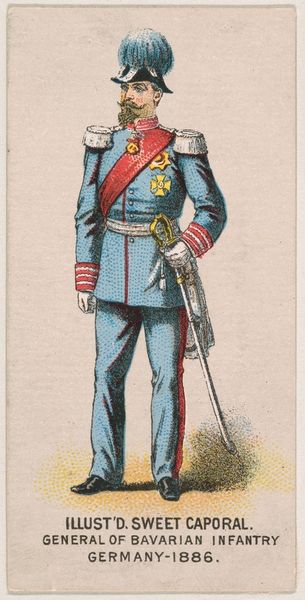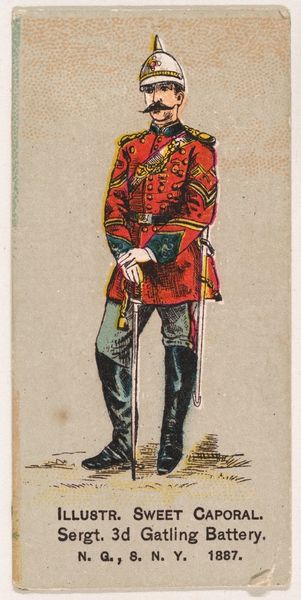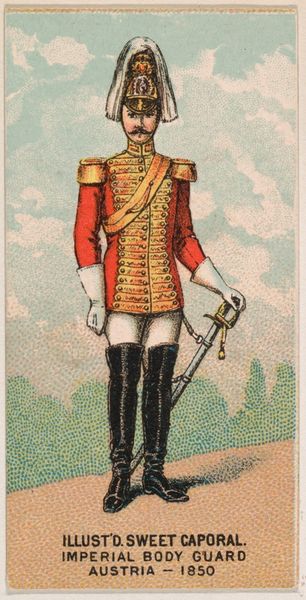
Hussar, Russia, 1886, from the Military Series (N224) issued by Kinney Tobacco Company to promote Sweet Caporal Cigarettes 1888
0:00
0:00
drawing, coloured-pencil, print
#
portrait
#
drawing
#
coloured-pencil
# print
#
coloured pencil
#
history-painting
#
academic-art
Dimensions: Sheet: 2 3/4 × 1 1/2 in. (7 × 3.8 cm)
Copyright: Public Domain
Editor: This small drawing, "Hussar, Russia, 1886," made with colored pencil around 1888 by the Kinney Brothers Tobacco Company, seems surprisingly detailed for a promotional item. I’m curious about the precision of the uniform. What should we be looking for when considering the significance of such a piece? Curator: We must examine this image through the lens of production and consumption. This wasn't high art, but rather a mass-produced print intended to be collected and traded. Think about the labor involved: the artists, the printers, the tobacco workers. How does that influence the final product? Editor: So, it’s less about the individual artistry and more about the process itself? I’m noticing how crisp and clean the image is. Curator: Precisely. And consider the social context. These cards were tools of branding. They promoted a certain lifestyle, and they reached a wide audience. How did the materials, like cheap card stock and mass-produced inks, affect the way viewers understood images of power and status in the late 19th century? Also, What message does the exotic military attire send to consumers? Editor: It’s interesting to think about how the materials themselves influenced the reception. It seems so far removed from a traditional portrait on canvas. Do the materials reflect anything about class dynamics at that time? Curator: Absolutely. The very disposability of these cards, meant to be tossed or traded, creates a different kind of value, a different kind of relationship to art and representation. It democratizes imagery, but through the mechanism of commodity culture. How are these values expressed, visually? Editor: This perspective really shifts how I view these kinds of collectibles. I always saw them as ephemera, but you’re showing me the layers of social meaning embedded in the materials and the process. Curator: Exactly! We gain so much more understanding about that time by analyzing production.
Comments
No comments
Be the first to comment and join the conversation on the ultimate creative platform.


